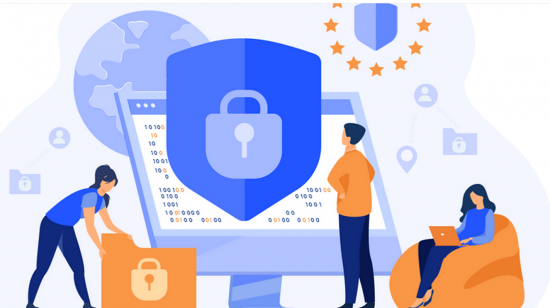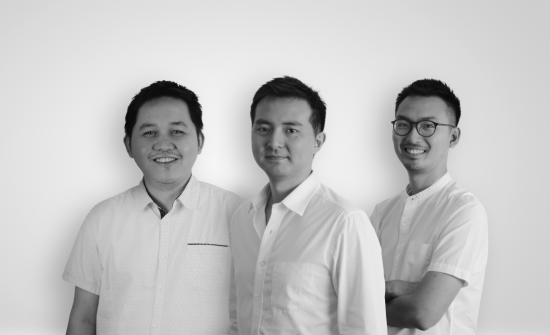
Antony Lee, Communications Master (李欣岳 / 媒體公關總監)
負責媒體與社群溝通相關輔導。加入 AppWorks 前有 18 年媒體經驗,是台灣第一批主跑網路產業的記者,先後任職《數位時代》副總編輯、《Cheers 快樂工作人》資深主編、SmartM 網站總編輯。畢業於交大管科系,長期關注媒體產業變化,熱愛閱讀商業與科技趨勢、企業與人物故事,樂於與人交流分享,期許自己當個「Internet 傳教士」。
進入 40 歲之後的人生,彷彿就像電影《命運好好玩》(Click) 中進入快轉模式的主角,感覺在 One Click 之後,我加入 AppWorks 就滿 4 年了。在這正邁往第 5 年的當下,想趁此機會,回顧一下我的 AppWorks 旅程,以及我被賦予的任務、角色,可以如何與我的 Stakeholders 協作。
過去這幾年,我最常被問到的問題,就是「為什麼要離開媒體,加入新創圈?又為什麼要加入 AppWorks?」事實上,我並不覺得我真的離開,現在只是以另一種角色參與。
媒體記者與編輯的工作,很長一段時間是我工作選擇的第一志願,因為透過文字內容分享觀點,進而讓讀者有所收穫、發揮影響力,對我來說,始終是充滿樂趣的事情。大學時期,我就投身校刊社,也經常在各大 BBS 上跟人辯論、打筆仗,對於第一份工作,幾乎沒有什麼多餘思考,很直覺的選擇就是財經雜誌。
很幸運,我在 2000 年加入創刊剛滿一年的《數位時代》,成為台灣第一批報導數位產業的記者,從此開展出往後 15 年的媒體職涯,在《數位時代》與《Cheers》兩本雜誌各二進二出。在 2015 年,我決定離開所謂的傳統媒體,投入當時剛創立、以銷售實體與線上課程為主的 SmartM,負責經營社群與製作自媒體內容。
我在 2015 年的職涯轉換,從事後來看,歸根究底是 Mobile Internet 所帶來的典範轉移,以及對我產生的震撼和衝擊。
第一個原因,來自大環境的結構面。當時,全世界最熱烈討論的是 Uber 與 Airbnb 模式,讓我意識到,一支可上網的手機,竟然可對計程車司機、民宿業者帶來如此巨大的轉變,而這兩種工作,原本只需要在自己的小天地中,經營自己的事業就已經足夠,什麼摩爾定律、破壞式創新、從 0 到 1⋯⋯這些對他們來說,是遠在天邊、幾乎毫不相關的事情,但 Mobile Internet 對他們工作所帶來的影響,顯然徹底顛覆了一切,讓我開始思考,「眼下的所有工作,沒有什麼將是天長地久不會改變的,是否該離開我原本的舒適圈到外面看看?」
第二個原因,則比較偏向個人面,因為我在前一年結婚了。「前女友」跟我一樣,都是傳統媒體的編輯,雖然我們當時所服務的媒體,待遇、福利、影響力都在業界平均之上,但在各種社群媒體、通訊工具紛紛橫空出世,幾乎重新改寫媒體定義的那些年,夫妻兩人「把雞蛋放在同一個籃子裡」,怎麼看都不是一個好主意,人生下半場將頗為艱險的機率很高。
隨後,我轉而投入新創領域,並在 2018 年加入 AppWorks,吸引我投入的原因,至今不曾改變過。包括我以及 AppWorks 所有的同事們,都相信「透過支持創業者展開成功的新創旅程,可讓台灣晉升為數位強國」這個北極星。
對身為台灣第一批報導數位產業的記者,至今從未離開過這個產業的我來說,見證台灣過往 20 多年的發展,一定會有某種程度的「不甘心」。在 1990 年代後期,全球 Internet 第一波浪潮中,台灣曾經位居跑得很前面的領先集團,在入口網站 (Portal)、電子商務、搜尋引擎、通訊軟體或是其他不少垂直領域中,台灣都曾有很優秀的創業者,在當時的起跑點,寫下讓人非常驕傲的成績,但在 .com 泡沫後,劇情急轉直下,在隨後而來的 Mobile Internet 浪潮,我們卻只是擦身而過。
不論是過往的編輯、記者,或是現在在 AppWorks 的 PR 工作,我都非常喜歡跟創業者交流,因為可以感染到他們的熱情與生命力。例如,還在媒體工作時,我大約每半年,會個別與我覺得「有趣、但尚未找到報導角度、先從交朋友與互相學習開始」的幾位創業者一起吃午餐或喝杯咖啡。
我記得有位創業者,擁有美國資訊科學排名 Top 5 大學的資訊碩士學歷,在矽谷享受優渥的生活與工作,某位被科技巨頭高額購併的新創創辦人,就曾是坐在他旁邊位子的同事。因為懷念台灣的生活與文化,決定舉家搬回台灣創業,當時還是不到 10 人的小公司,在我們定期的碰面交流中,他會跟我分享最近創業遇到哪些問題,正在思索如何解決,等到半年後再見面時,他會很興奮的跟我說如何把問題解決了,然後再來要闖什麼關、打什麼怪,而這些交流的部分內容,在幾年後,很自然地就成為我報導內容中的獨家角度。
後來,他的創業成績很不錯,產品與技術都很到位,順利完成了幾輪募資、進軍國際市場,並已啟動 IPO 計畫。我到現在,都還清楚記得,在我們某一次喝咖啡時,正逢他創業的低潮,他幾乎是眼中泛淚的跟我說:「我賣掉兩台車、一棟矽谷的房子,說服全家人放棄美國夢,回台創業,每天跟老婆一起騎機車上班,儘管現在很多人都不看好我,但我相信我的創業一定會成功。」那個畫面,至今仍是我覺得優秀創業者展現決心、勇氣和生命力的美麗風景。
在 AppWorks 這幾年,除了 AppWorks 本身的 PR 工作外,我另一個更重要的角色與任務,就是透過以前在媒體的經驗,協助輔導創業者在 PR 和產製自媒體內容相關的事務。在工作上,我有兩個主要的 TA,第一個,是找到 Prodect Market Fit、進入成長期,可透過適度媒體曝光宣傳加乘、轉動飛輪的 AppWorks 生態系創業者;第二個,則是負責網路產業,總是在尋找下一篇科技趨勢、新商業模式、新創報導角度的記者或編輯。
對於創業者,我自我期待的角色,是提供 PR 相關的協助與輔導,歡迎預約我的 Office Hour,一起發想未來的 PR 策略。包括擬定新聞稿角度、準備媒體專訪,或是如何產製頻率與品質穩定的自媒體內容,我都非常樂意一起交流。因為絕大多數的創業者,都鮮少有與媒體交手的經驗,並不熟悉如何提供讓媒體有興趣的角度、有意義的故事或數字,甚至是與媒體合作的潛規則,而每家新創也都有各自的特色與擅長領域,很難有一體適用所有新創的 PR 策略,這樣坐下來深度的一對一交流,根據這幾年實作的經驗,是最為有效的方式,我可以運用過往的媒體工作經驗,提供一些媒體如何思考、如何吸引記者興趣、如何透過媒體與 TA 溝通等相關的回饋或建議。事實上,在這過程中,我從創業者身上學習的收穫更大,因為能更深入了解許多創業者的思考脈絡、定義與解決問題的過程。
對於媒體記者與編輯,我自我期待的角色,是促成媒體更深入認識新創的橋樑。對媒體來說,AppWorks 生態系累計至今的 435 支活躍新創、1,402 位創業者,是很豐富且多元的報導資源,許多來自創業者的精彩創業故事、產業最前緣的觀察,在當下,未必能夠立刻就 Google 得到,而我很樂意與媒體分享這些內容。
這幾年來,不少負責科技或新創報導路線的記者,都與我建立起不錯的協作默契。當報導專題還在醞釀、搜集素材階段,尚未進入正式的內部題目會議前,一起約時間喝杯咖啡,跟我分享正對哪些議題感興趣、正在尋找哪類報導角度的案例,我可以提供一些更貼近業內現況的角度與觀點,或是一起發想專題企劃的架構、思考如何創造「讀者為什麼要看」的閱讀利益,以及推薦適合的新創受訪案例,作為記者往後報導的參考。
當然,這些都不會是硬推銷,在報導中,也不用非得要有 AppWorks 相關的篇幅,一切皆只是建議與參考。因為我相信,只要有更高品質、更深入業界觀點、更有影響力的媒體報導,對台灣新創圈整體的長期發展,都是巨大的加分。有趣的是,在這樣介於正式採訪與無目的閒聊之間的交流,出乎我預料的,「媒體工作者的職涯規劃」是個滿熱門的話題,而我過往的工作經驗,讓我似乎成了年輕媒體工作者諮詢的朋友,因為從沒看過有關於這個主題的媒體報導或書籍,對此的疑惑,也不是每個人都能找到適合討論、尋求建議的對象。
在多次調整之後,目前,我正在經營 AppWorks Media Meetup 的社群,希望成為協助媒體更深入認識創業者的橋樑。AppWorks Media Meetup 開放給對數位、新創相關議題持續有報導與採訪需求的媒體記者、編輯,或是自媒體的創作者 (包含 Blogger、Podcaster、YouTuber、Newsletter),大約每月會設定一個主題,邀請兩位 AppWorks 生態系的創業者分享最前緣有關科技、市場、商業模式的趨勢觀察,或是第一手的創業故事,可讓媒體作為發想未來製作內容的參考,或是往後有適合的專題角度,也能從此延伸出更進一步的專訪成為報導內容。
以上,就是我的產銷履歷與協作說明。真心期待,台灣能成為更偉大的數位強國,有更多優秀的創業者、表現亮眼的新創,以及更具影響力的媒體報導。在這過程中,我也將持續透過所扮演的角色,讓這一切更往前推進一些,在路上!



